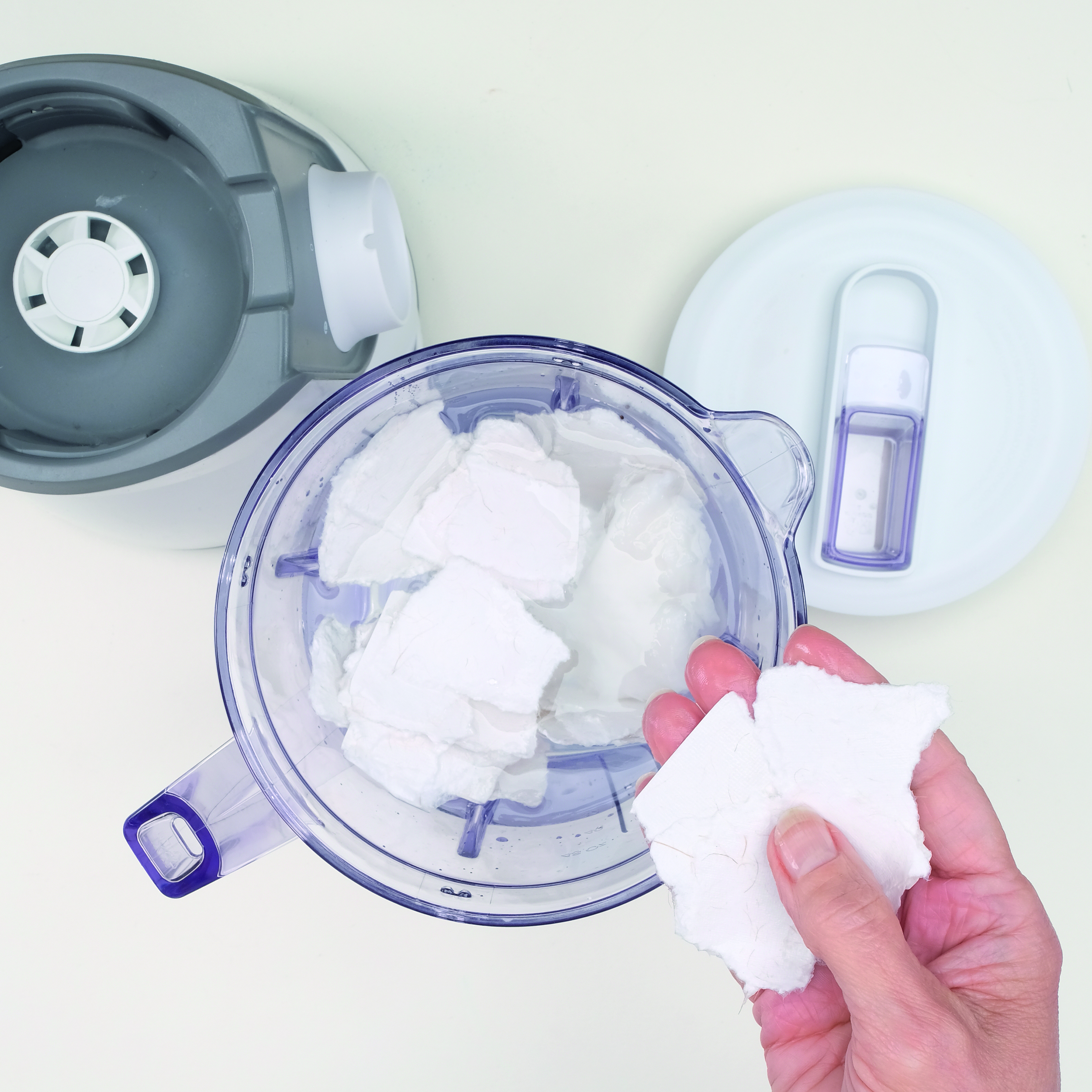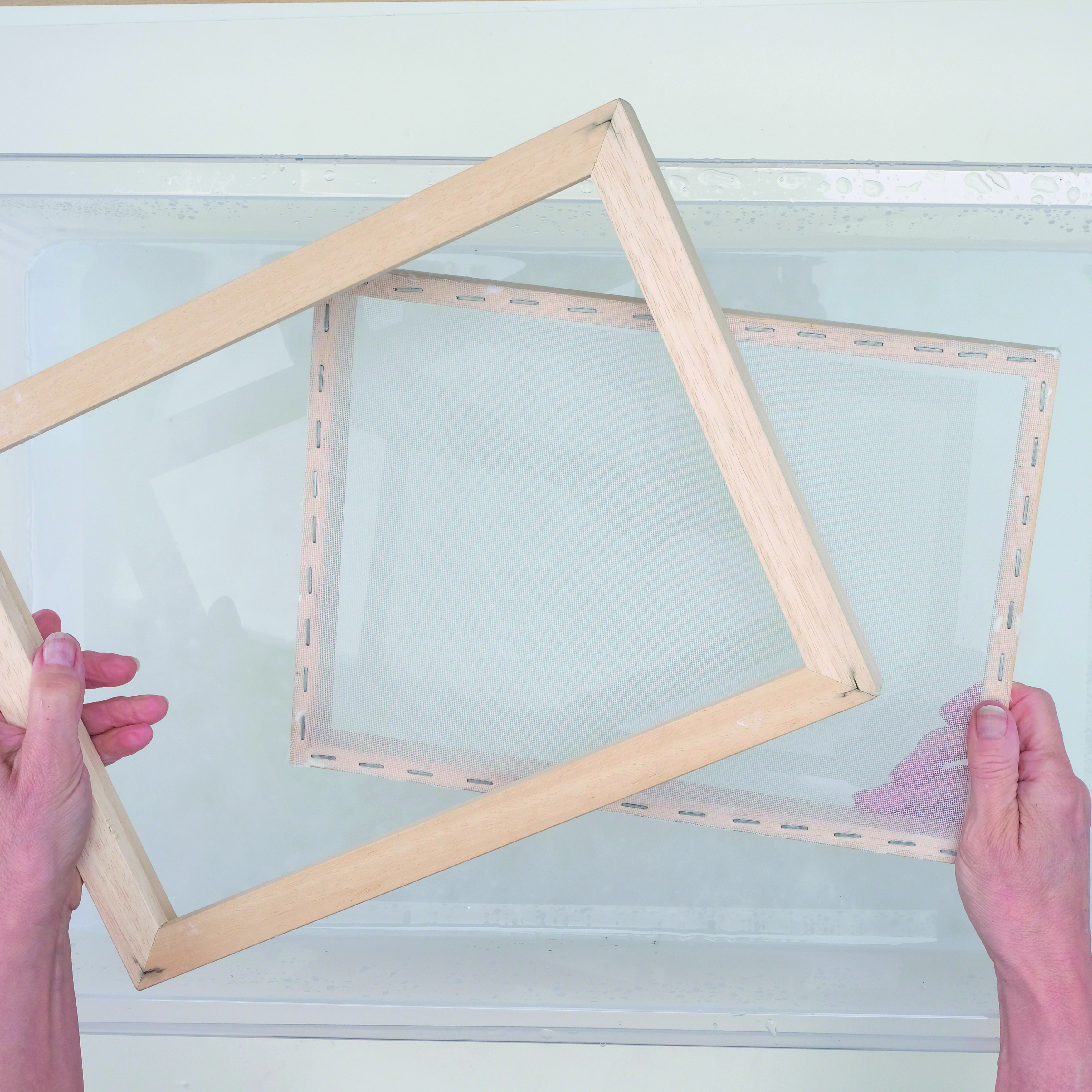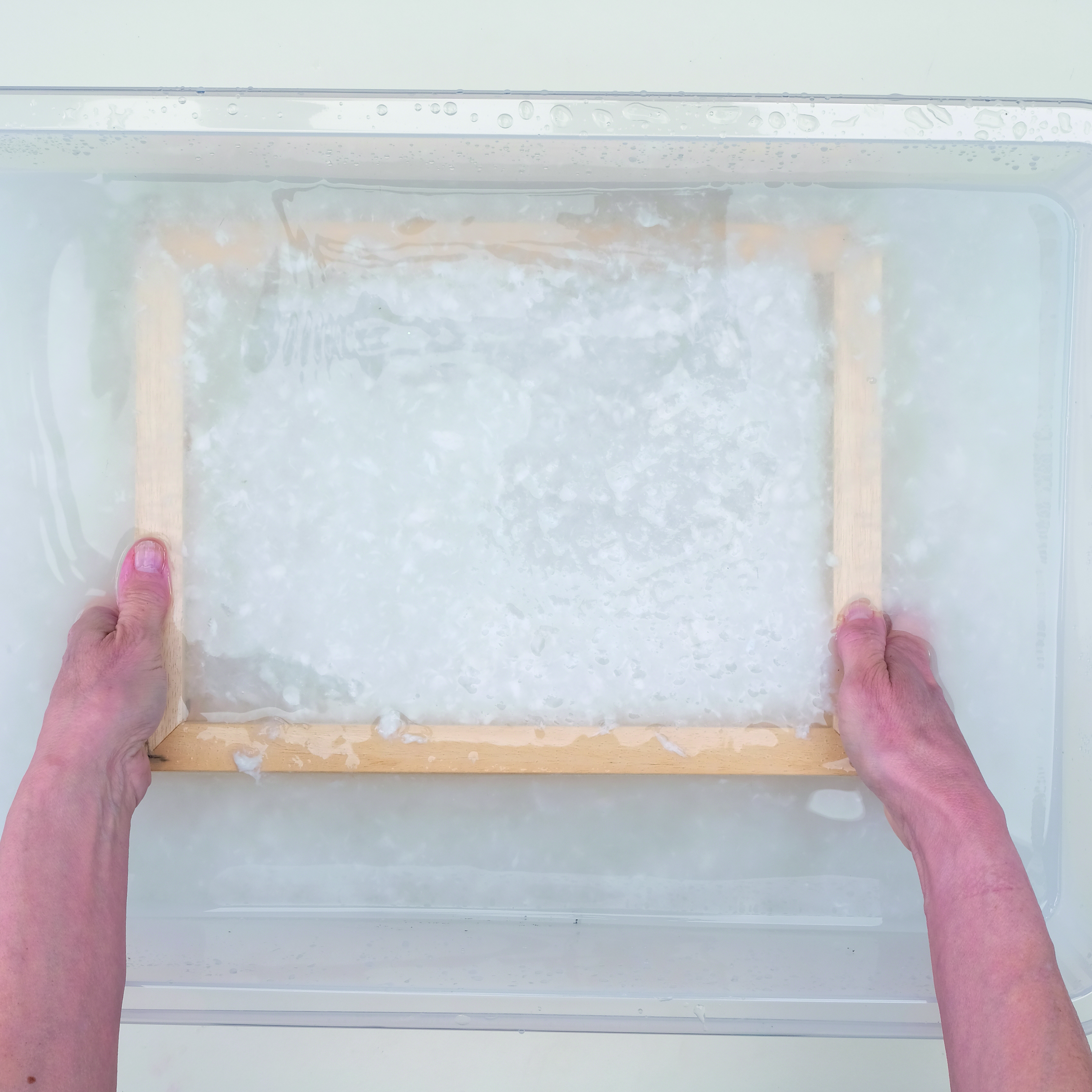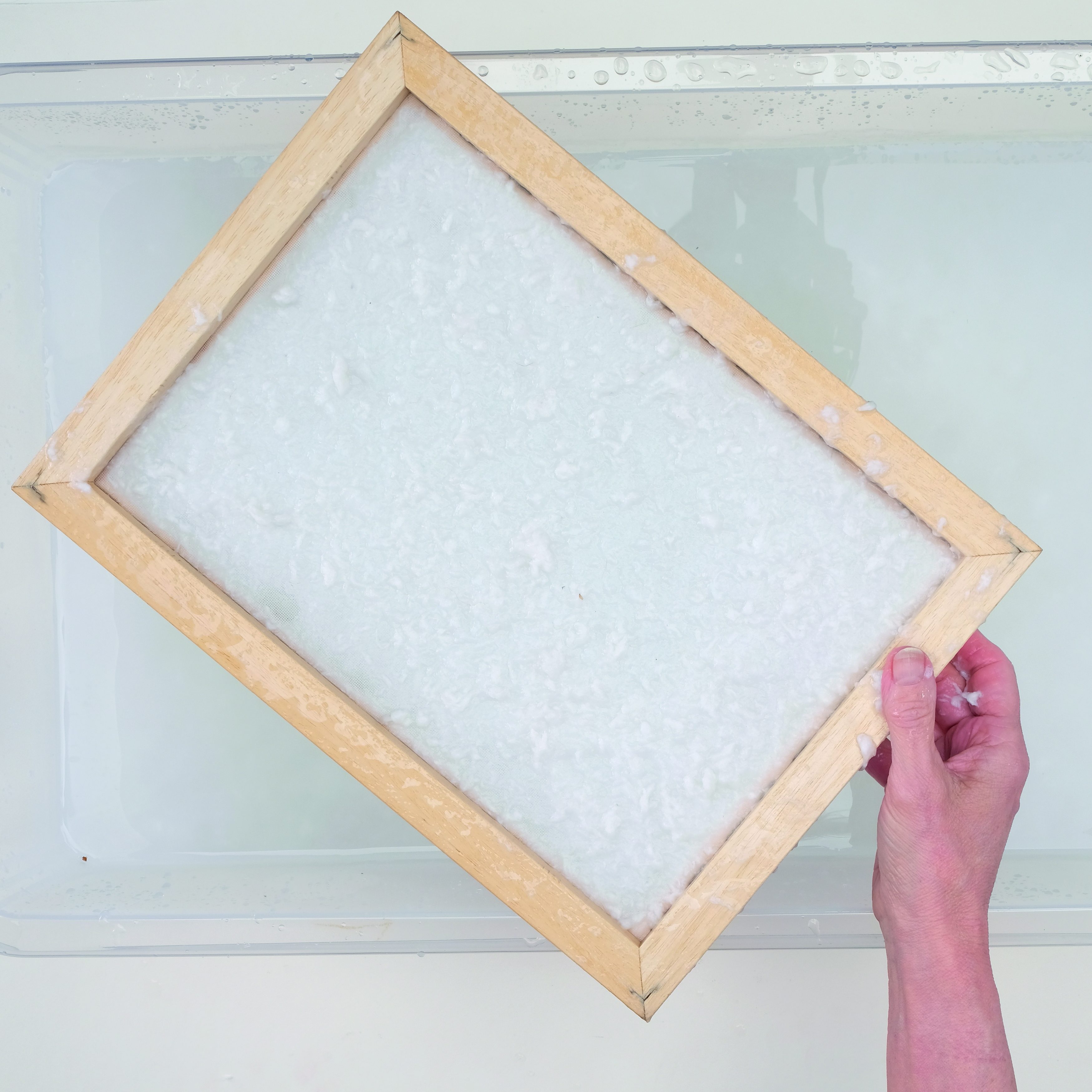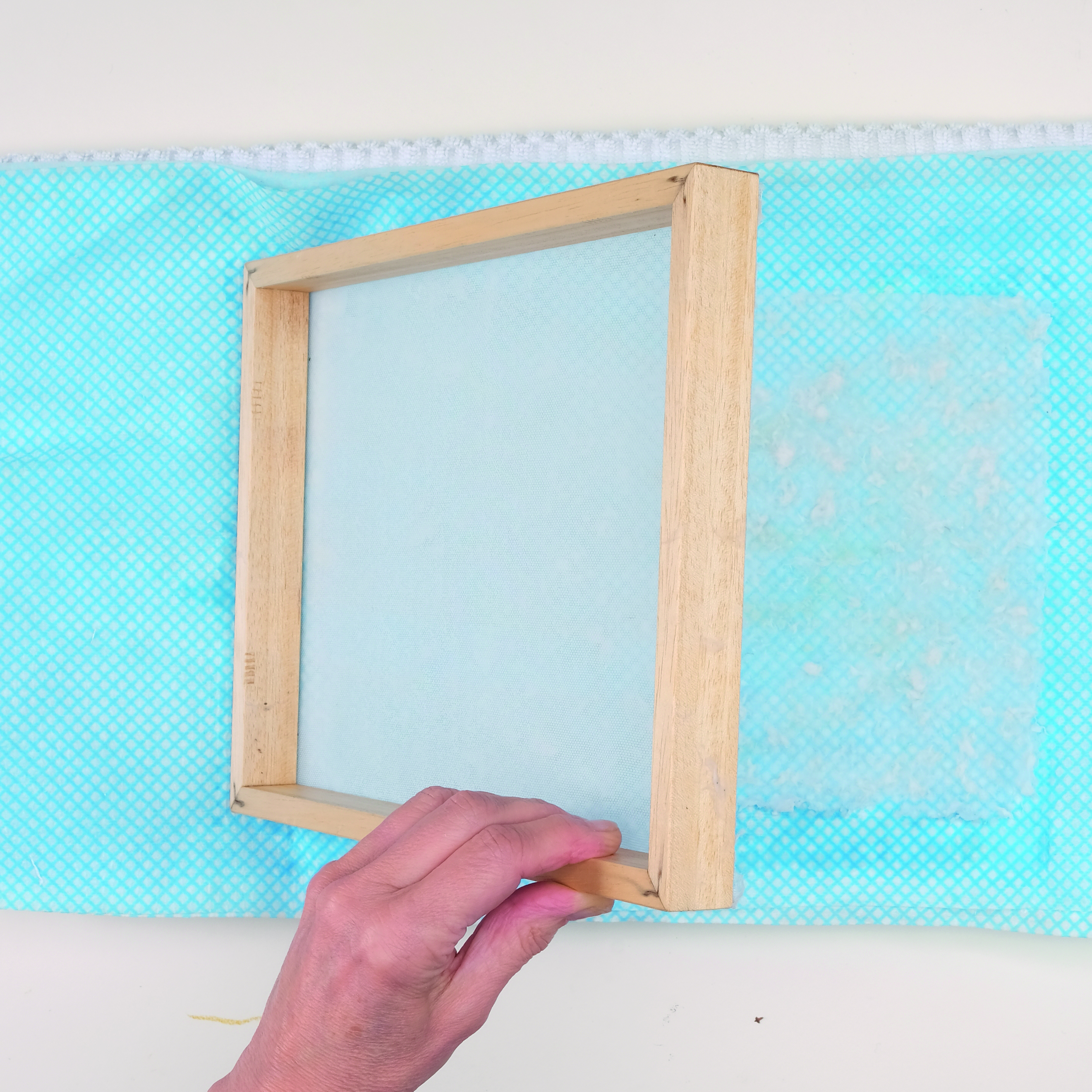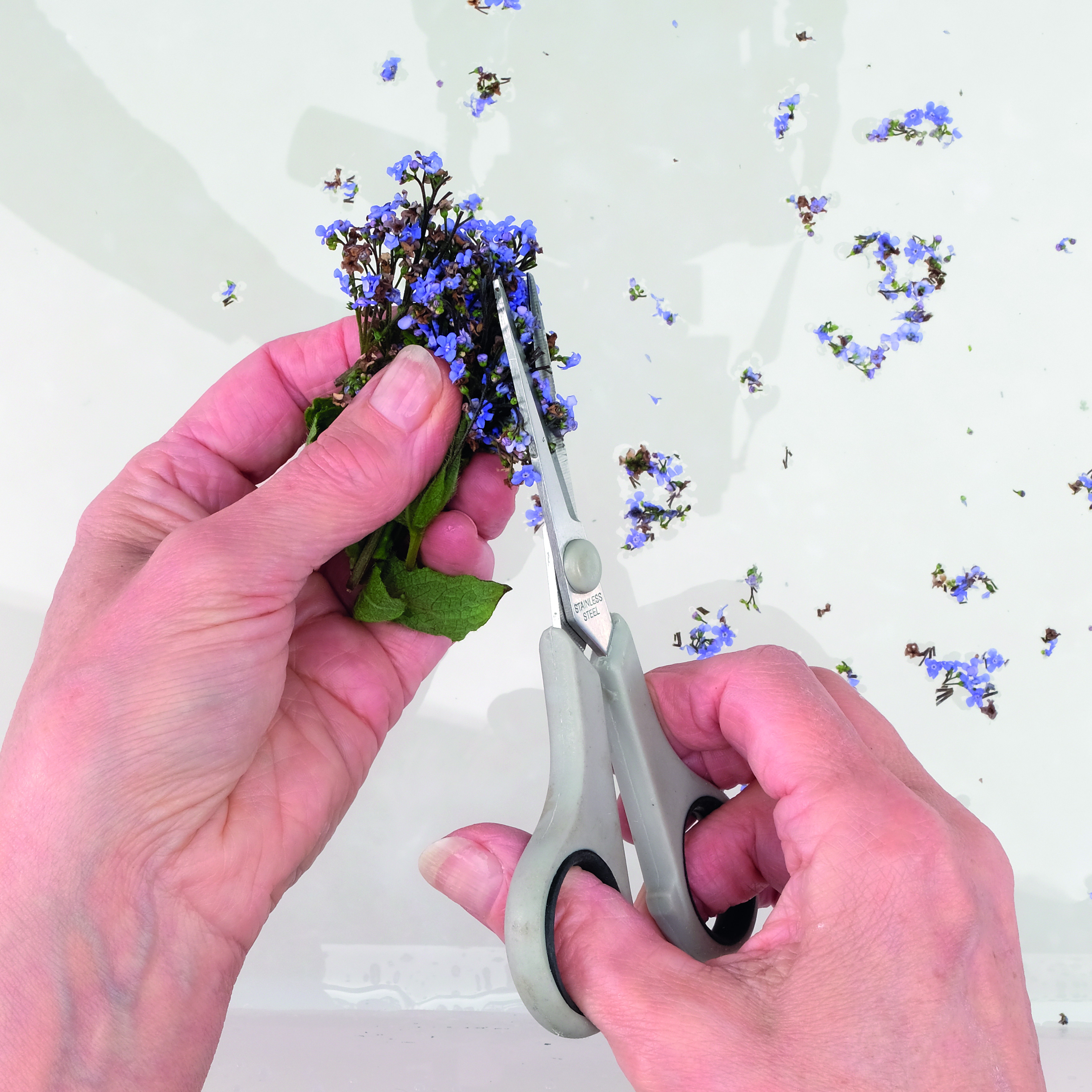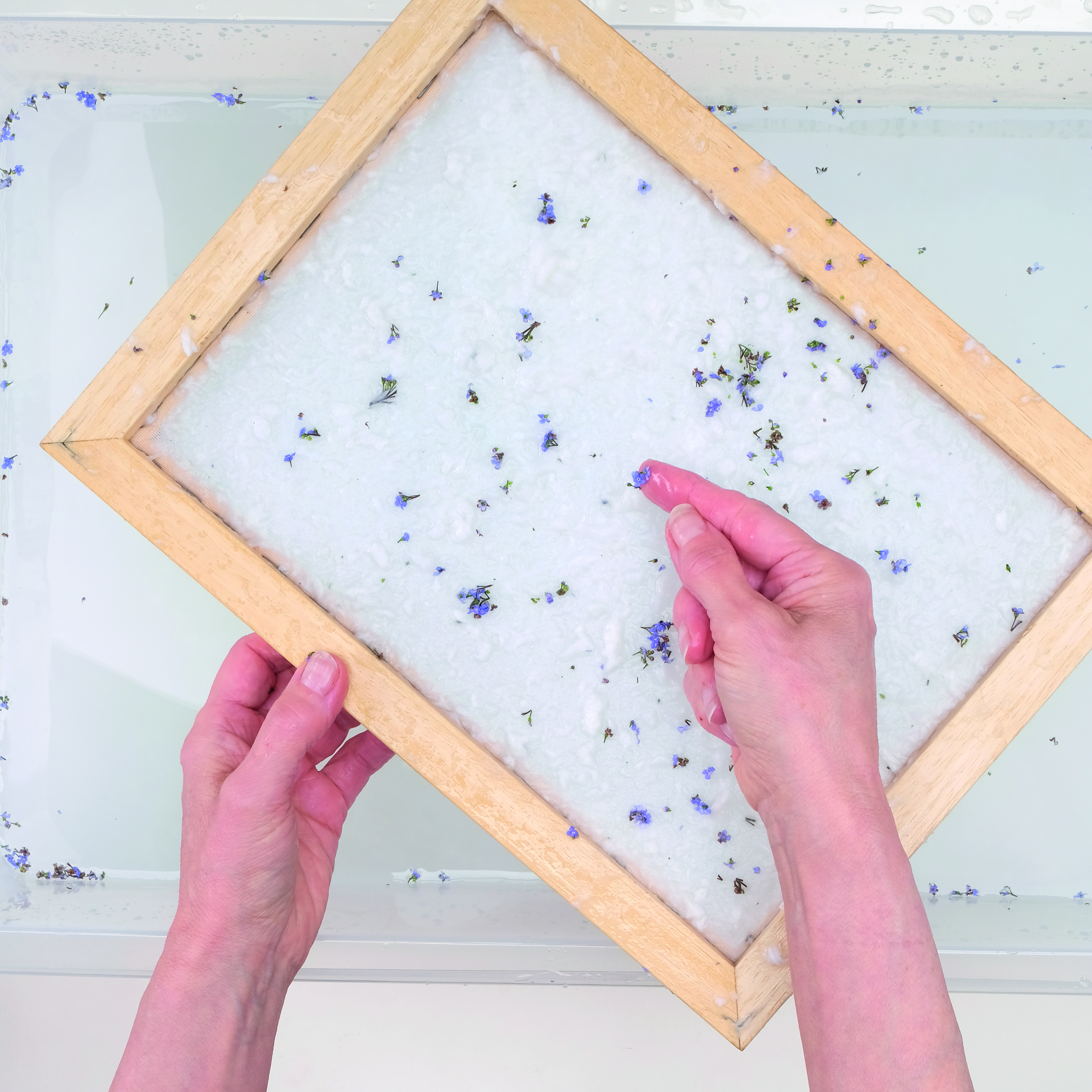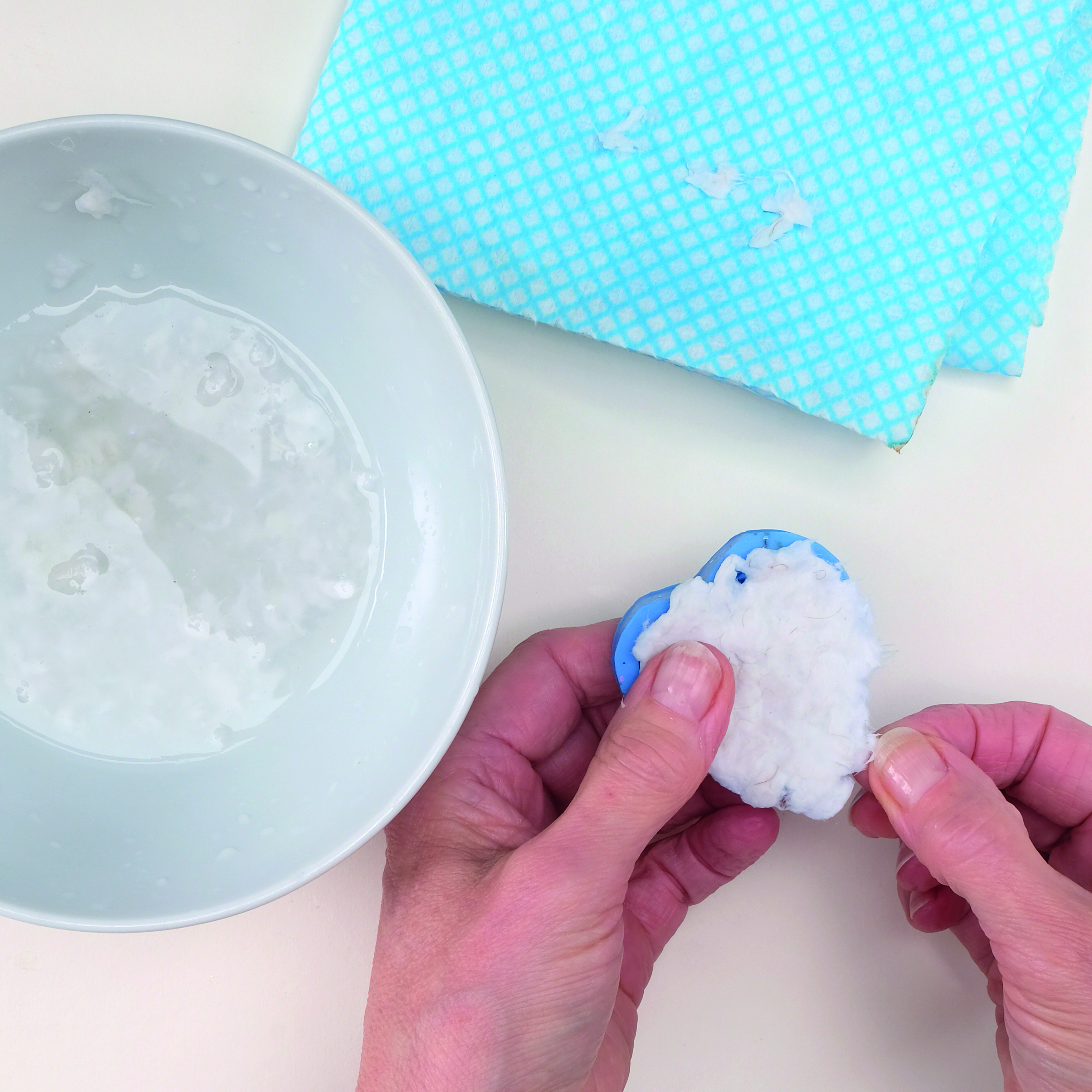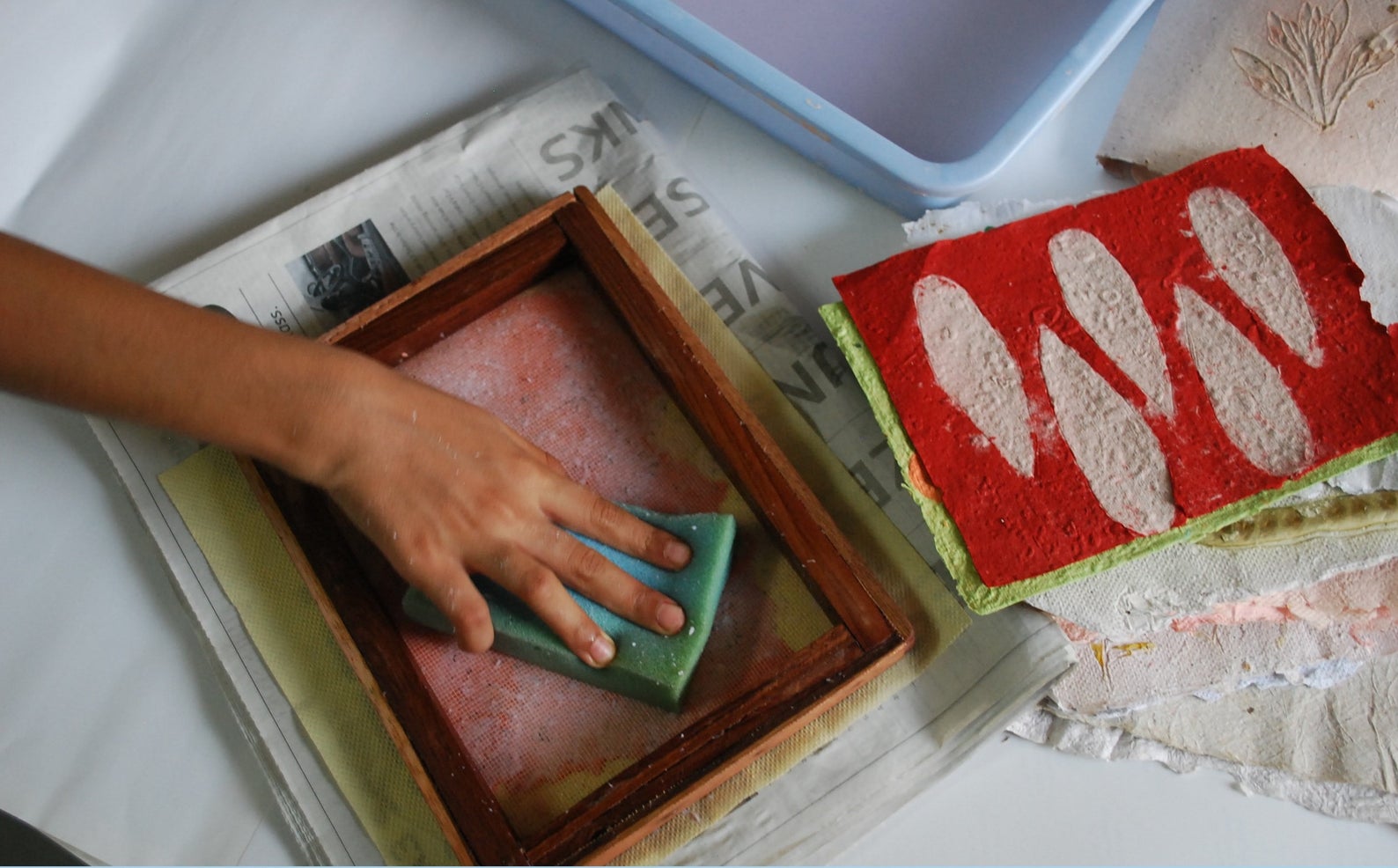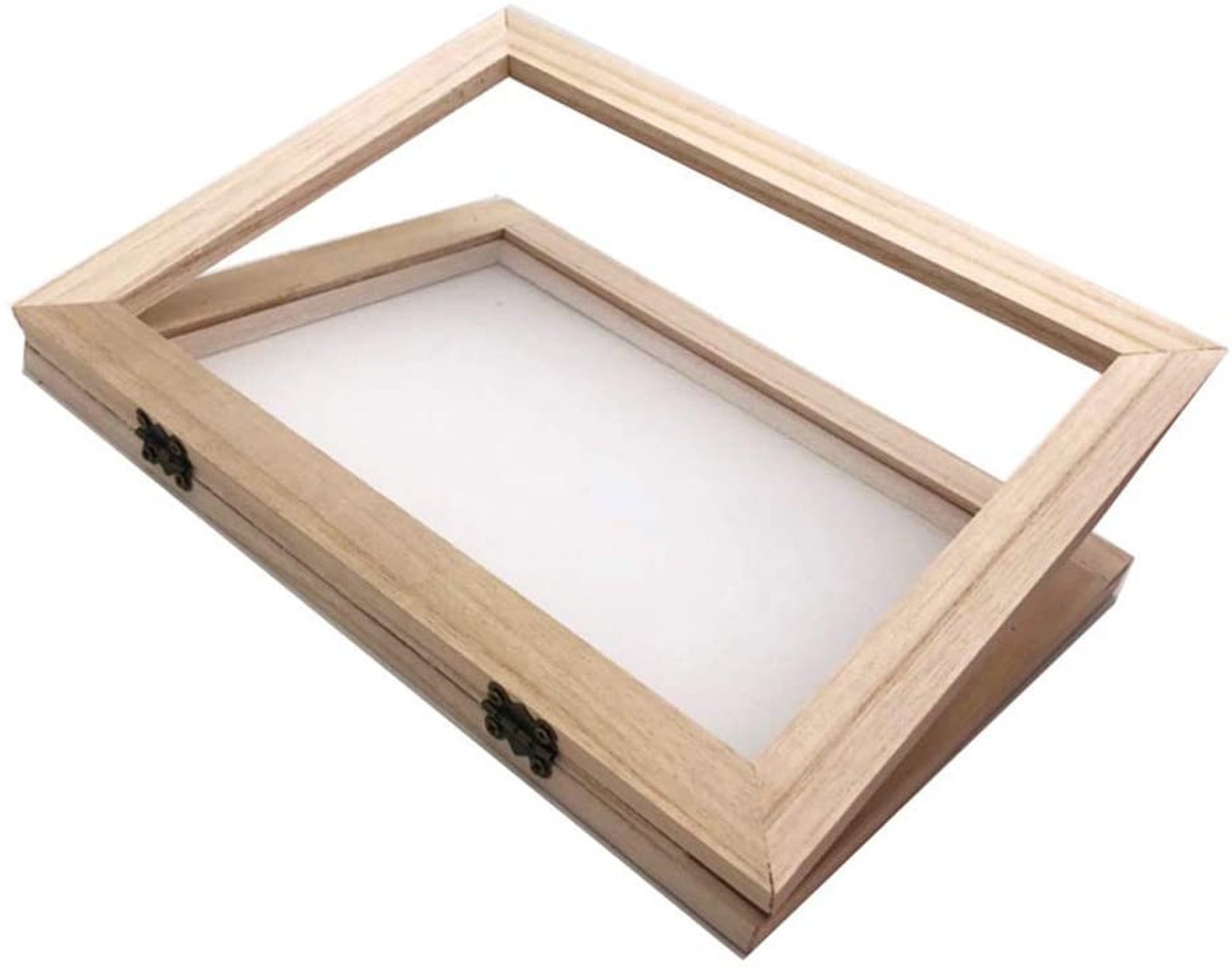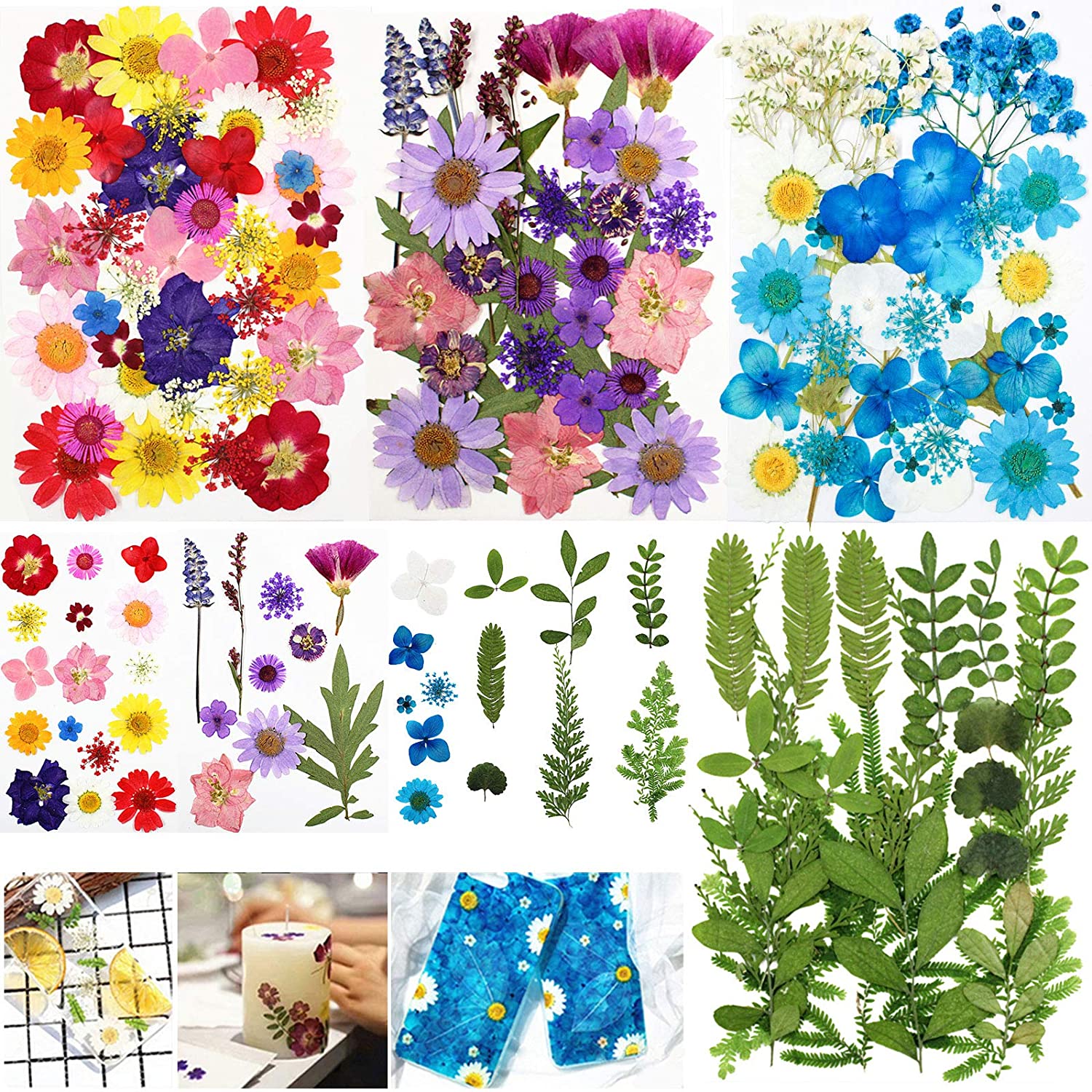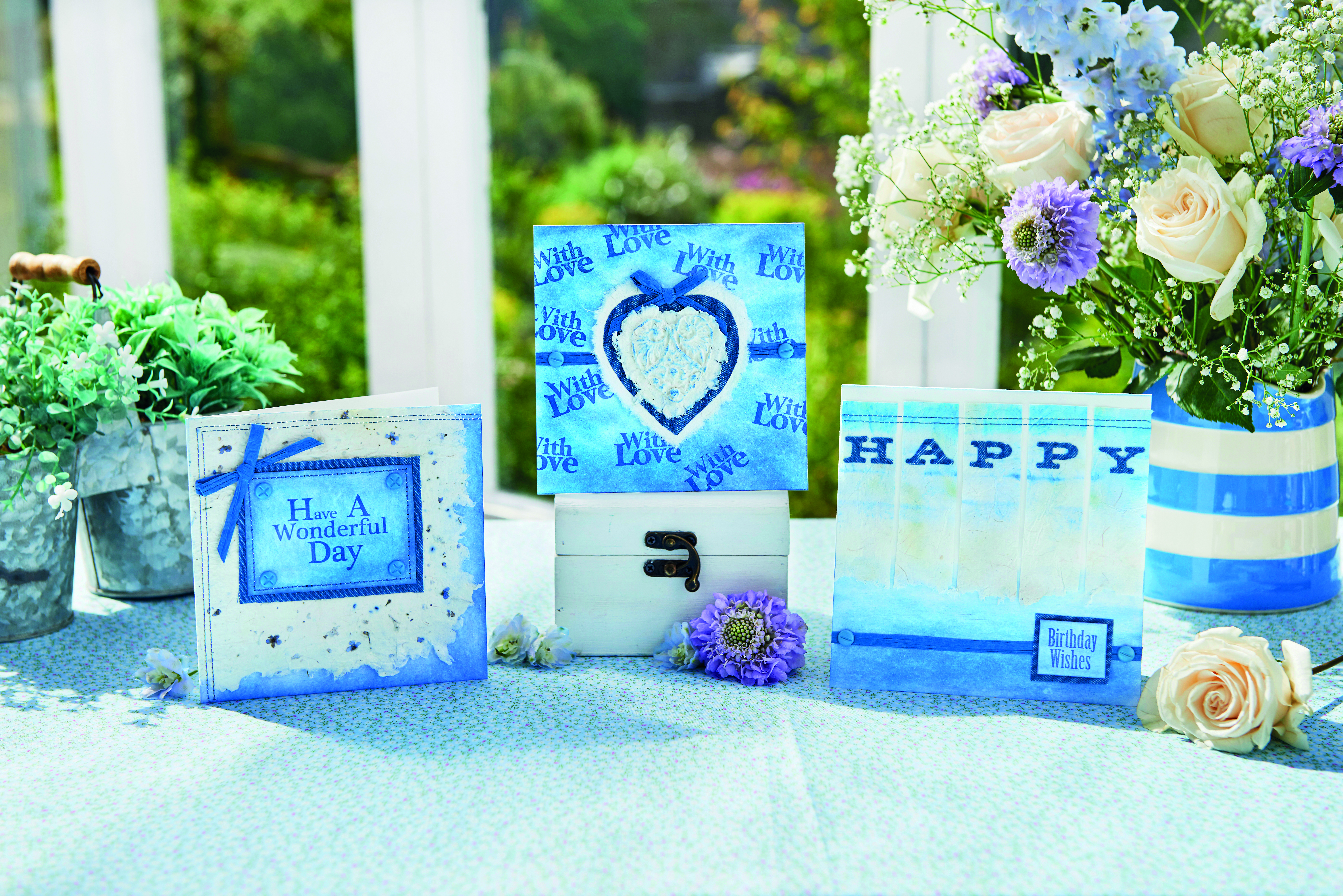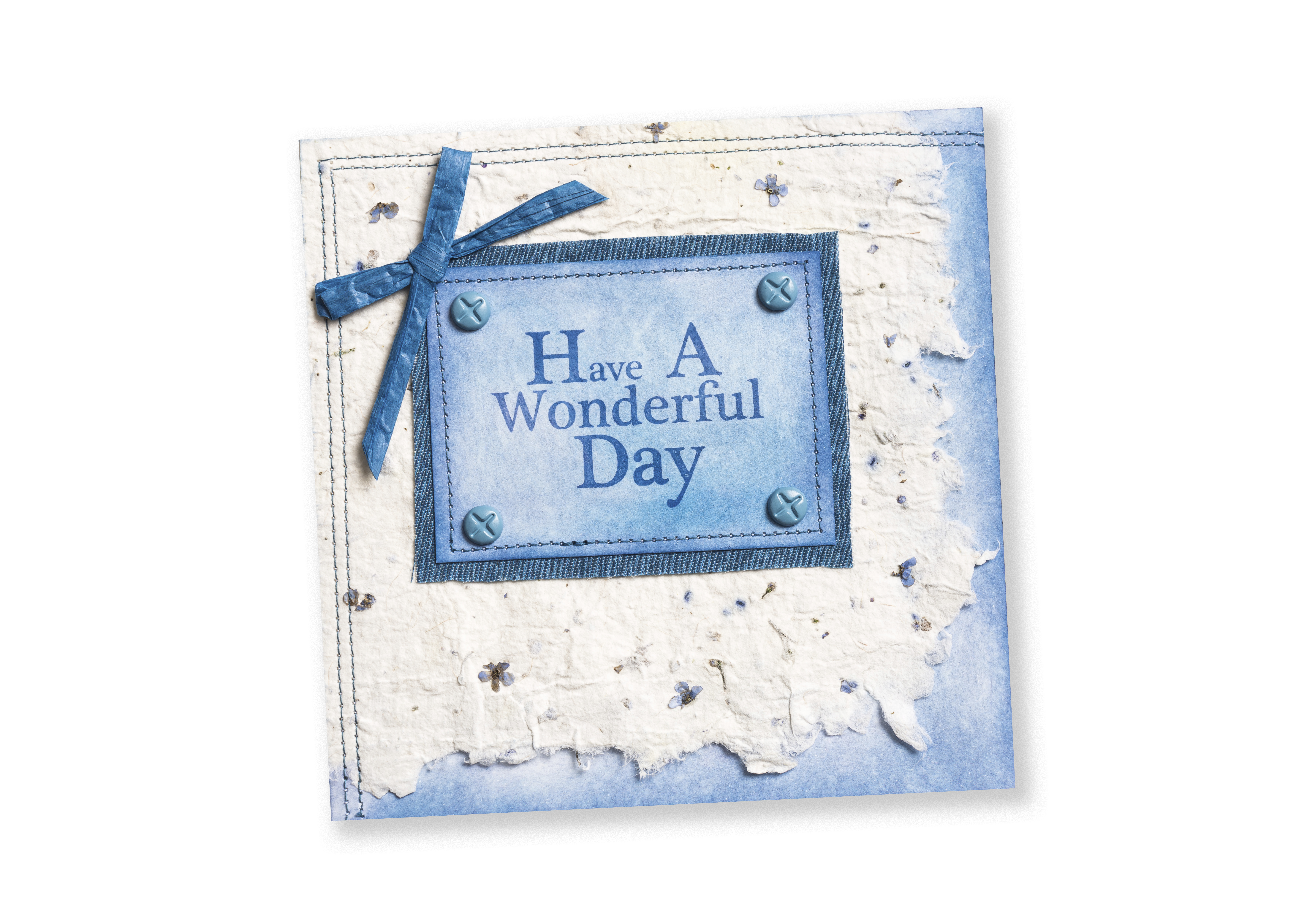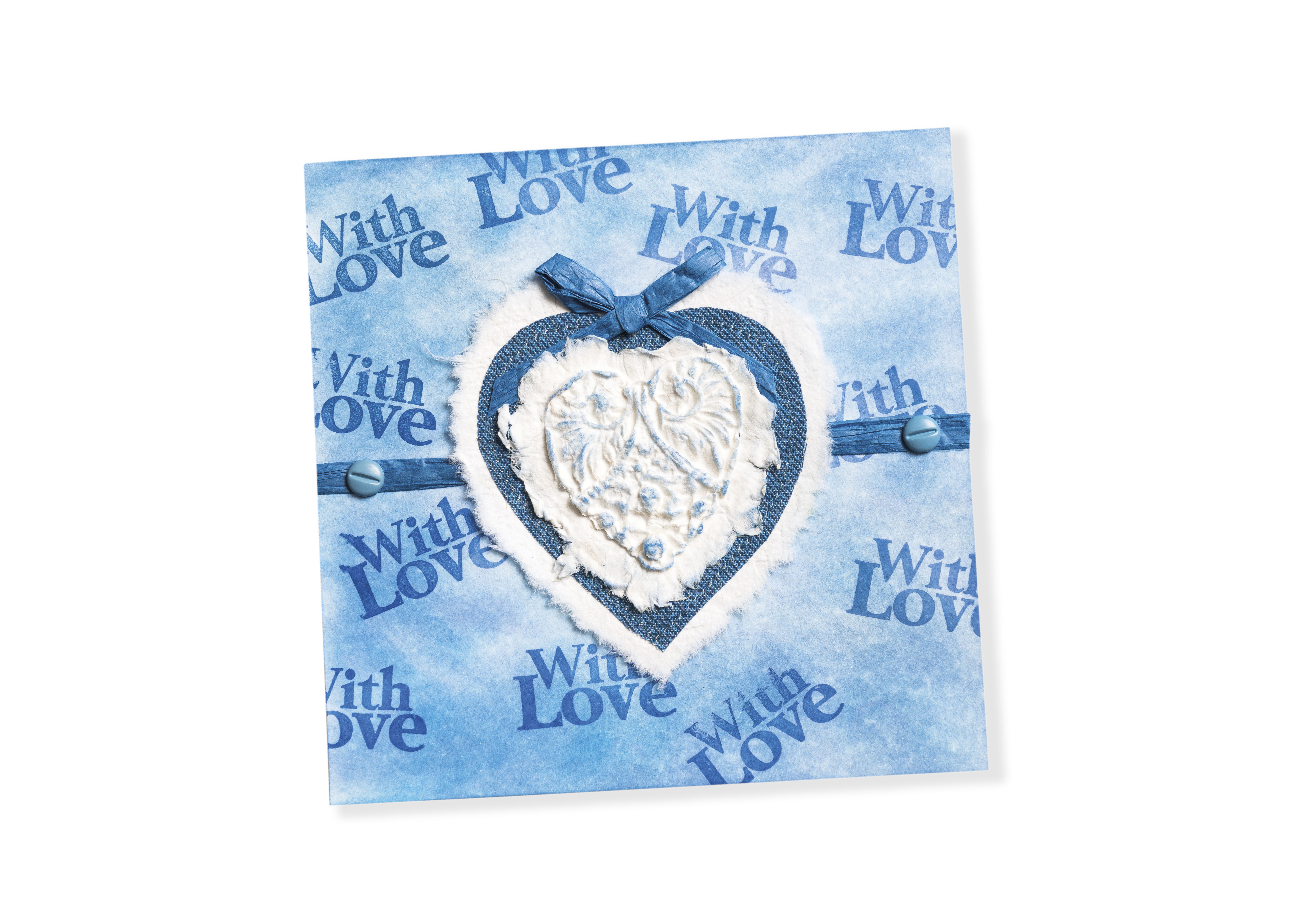How is paper made? Well - it's easier than you might think, and you can make your own paper at home! Making your own handmade paper is a great way to recycle all your scrap paper, including receipts, junk mail and scraps from cardmaking. Natural fibres such as jute or watercolour paper have the strongest fibres, but experiment with different types of paper; even toilet paper is quick to break down for moulding! You will need a frame and deckle when making paper – buy one ready-made, or make your own using small picture frames with insect mesh stapled on top.
To break down the paper for your handmade paper you will need a liquidizer/ blender (make sure it is thoroughly cleaned after use). You can add seeds, flowers, glitter or even tiny bits of contrasting paper to add interest. It’s also easy to arrange pressed flowers onto the drained paper before removing it from the frame. Paper pulp also makes ‘paper clay’. Paper clay can be moulded quite easily on a rubber stamp or inside a resin mould to create a 3D paper shape that dries hard. This paper clay can then be used to make 3D card toppers or in lots of other arts & crafts projects!

Designer Dorothy Wood has put together her top tips for this project, how to make paper:
- Drawing, natural fibres and watercolour papers are best for making handmade paper as the fibres are stronger.
- Recycle receipts, junk mail and scrap paper, adding small quantities to the basic handmade paper mix.
- Put the J-cloth/paper stack on a clean flat surface outdoors. Put a board on top and stand on it to remove as much excess water as possible from your handmade paper.
- Your handmade papers can be hung on a washing line once they have been pressed between two J-cloths or left flat to dry.
- Leave the J-cloths in place until the handmade paper is completely dry – this can take a day or two. Peel off the J-cloths very carefully.
We love seeing what you make, so if you've made your own paper, or have followed any of our other craft tutorials, don’t forget to share your craft projects with us on Facebook and Twitter, too!
To make handmade paper you will need
- Papermaking frames & deckles (A4 size)
- White toilet paper
- Kitchen blender
- J-cloth
- Hand towel
- Dried, pressed flowers

